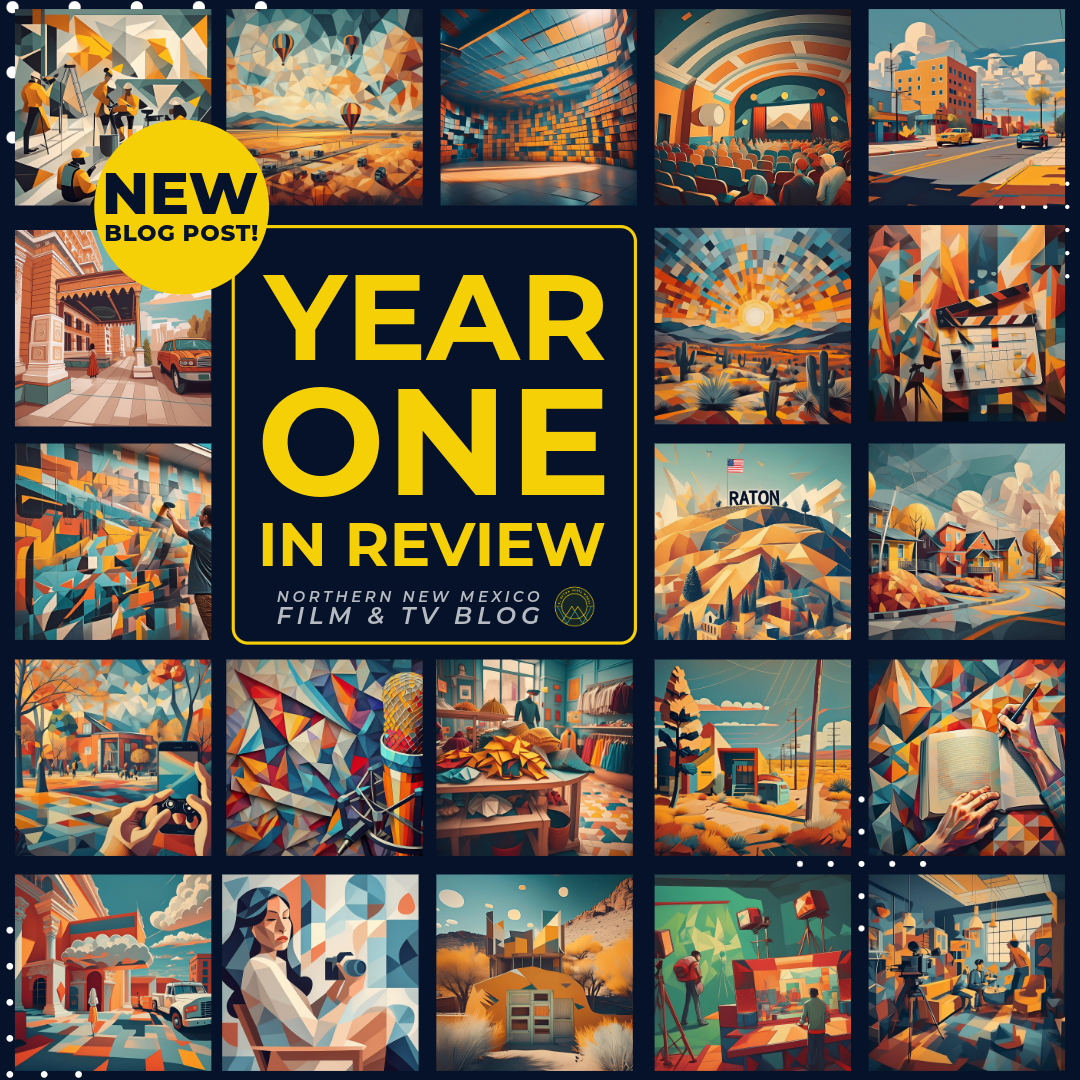Film funding opportunities in New Mexico
By ERMW Team
Thursday, April 17, 2025
New Mexico has blossomed into a vibrant hub for film and television production, affectionately nicknamed "Hollywood of the Southwest." Beyond its stunning landscapes and rich cultural heritage, a significant draw for filmmakers is the state's attractive financial incentives. However, navigating the world of film funding can be daunting. This blog post will delve into the various funding opportunities available in New Mexico, providing examples and insights to help your project get off the ground.
The Cornerstone: New Mexico's Film Production Tax Credit
The most significant pillar of film funding in New Mexico is its refundable Film Production Tax Credit. This incentive offers a base 25% tax credit on qualified expenditures made in the state, including non-payroll spending, payments to resident labor, and non-resident performing artists. What makes this credit particularly appealing is its refundability, meaning that if the credit exceeds your tax liability, the state will issue you a refund.
Uplifts to Maximize Your Credit:
New Mexico goes further by offering several potential uplifts to the base credit, allowing productions to reach a maximum of 40%:
Series Television and Standalone Pilots: An additional 5% credit is available for television series with an order of at least six episodes per season and a New Mexico budget of at least $50,000 per episode, or for standalone pilots intended for series television.
Example: If you're filming the first season of a sci-fi series in New Mexico with a per-episode budget of $100,000 and an order for eight episodes, you could qualify for an additional 5% on your qualified spending.
Qualified Production Facilities (QPF): Utilizing certified soundstages or standing sets in New Mexico can earn you another 5% tax credit.
Example: Shooting key interior scenes at Cinelease Studios in Albuquerque, a qualified production facility, could make you eligible for this uplift.
Filming Uplift Zone: Productions that undertake qualified expenditures in areas at least sixty miles outside of Santa Fe and Albuquerque City Halls can receive an additional 10% credit. This aims to incentivize filming in more rural parts of the state.
Example: A Western film primarily shot around Las Cruces in southern New Mexico or Colfax County near Colorado as examples could benefit from this significant 10% uplift.
Non-Resident Below-the-Line Crew Exception (NRCE): While generally focused on incentivizing local hires, New Mexico offers a 15% credit on wages paid to a limited number of non-resident below-the-line crew positions (capped at 15% of total budgeted New Mexico below-the-line crew wages). The number of eligible non-resident crew members depends on the budget size.
Key Considerations for the Tax Credit:
Registration: Projects must register with the New Mexico Film Office at least 30 days prior to the start of principal photography.
Qualified Spend: This includes direct production and post-production expenditures subject to New Mexico taxation.
Residency: Wages paid to New Mexico residents fully qualify. There are specific rules and caps for non-resident performing artists and below-the-line crew.
Funding Cap: The total amount of film tax credits the state can award in a fiscal year is capped, currently at $130 million for FY2025, increasing to $160 million by FY2029. Credits are typically processed on a first-come, first-served basis.
Beyond Tax Credits: Grants and Other Funding Avenues
While the tax credit is the primary financial incentive, filmmakers can also explore other funding opportunities:
Santa Fe Film Institute (SFFI) Grants: The Santa Fe Film Institute offers grants to film projects of any length, genre, or subject. They have two main categories:
Regional Grants: Open to residents of New Mexico, Arizona, Oklahoma, Colorado, and Texas, with New Mexico residents eligible for up to $5,000 and out-of-state residents up to $2,000.
Example: A New Mexico-based documentary filmmaker in pre-production could apply for a Regional Grant to help cover initial research and development costs.
Northern Rio Grande National Heritage Area (NRGNHA)/Los Luceros Grants: Specifically for filmmakers residing in Santa Fe, Rio Arriba, or Taos counties (or those who graduated high school there), offering up to $5,000. A $10,000 grant may be awarded for films made at or about the Los Luceros Historic Site.
Example: A filmmaker living in Taos developing a narrative short film that highlights the cultural heritage of the region could apply for this grant.
New Mexico Film Foundation (NMFF) Grants: This non-profit organization aims to support the independent film industry in New Mexico. They offer various grants to New Mexico independent filmmakers, including those for screenwriting, filmmaking, and post-production. Specific grant details and application periods vary, so it's essential to check their website for current opportunities.
Film Crew Advancement Program (FCAP): While not direct funding for the film itself, FCAP provides reimbursement for certain crew members' wages, effectively reducing production costs. This program aims to support the training and advancement of New Mexico residents in below-the-line positions.
Angel Investors: High-net-worth individuals interested in investing in early-stage companies, including film projects, can be a source of funding. Organizations like New Mexico Angels connect investors with startups and high-growth potential companies in the state and the Southwest region. While not exclusively focused on film, they may consider compelling film projects with strong business plans. Networking within the New Mexico film community and attending industry events can help connect filmmakers with potential angel investors.
Fiscal Sponsorship: Organizations like the New Mexico Film Foundation can act as a fiscal sponsor for independent film projects. This allows filmmakers to solicit grants and tax-deductible donations under the foundation's non-profit status.
Navigating the Funding Landscape: Tips for Filmmakers
Research Thoroughly: Understand the specific eligibility requirements, application processes, and deadlines for each funding opportunity.
Develop a Strong Project: A well-written script, a clear vision, a realistic budget, and a solid production plan are crucial for attracting any type of funding.
Highlight New Mexico Connections: Emphasize how your project will benefit the local economy, hire New Mexico crew and talent, and showcase the state's unique locations and culture.
Network: Attend film festivals, industry events, and connect with local filmmakers and production companies in New Mexico. Building relationships can open doors to potential funding partners and collaborators. Organizations like Film Las Cruces, Albuquerque Film Office, and El Raton Media Works can be valuable resources for networking.
Consider Co-productions: Partnering with established production companies in New Mexico can provide access to their resources, expertise, and potential funding networks.
Securing funding for your film project in New Mexico requires a strategic and multifaceted approach. By understanding and leveraging the state's generous Film Production Tax Credit, exploring available grants from organizations like the Santa Fe Film Institute and the New Mexico Film Foundation, and potentially engaging with angel investors or seeking fiscal sponsorship, filmmakers can significantly increase their chances of bringing their cinematic visions to life in the "Hollywood of the Southwest." Remember to meticulously research each opportunity, craft a compelling project, and actively engage with the vibrant New Mexico film community.














